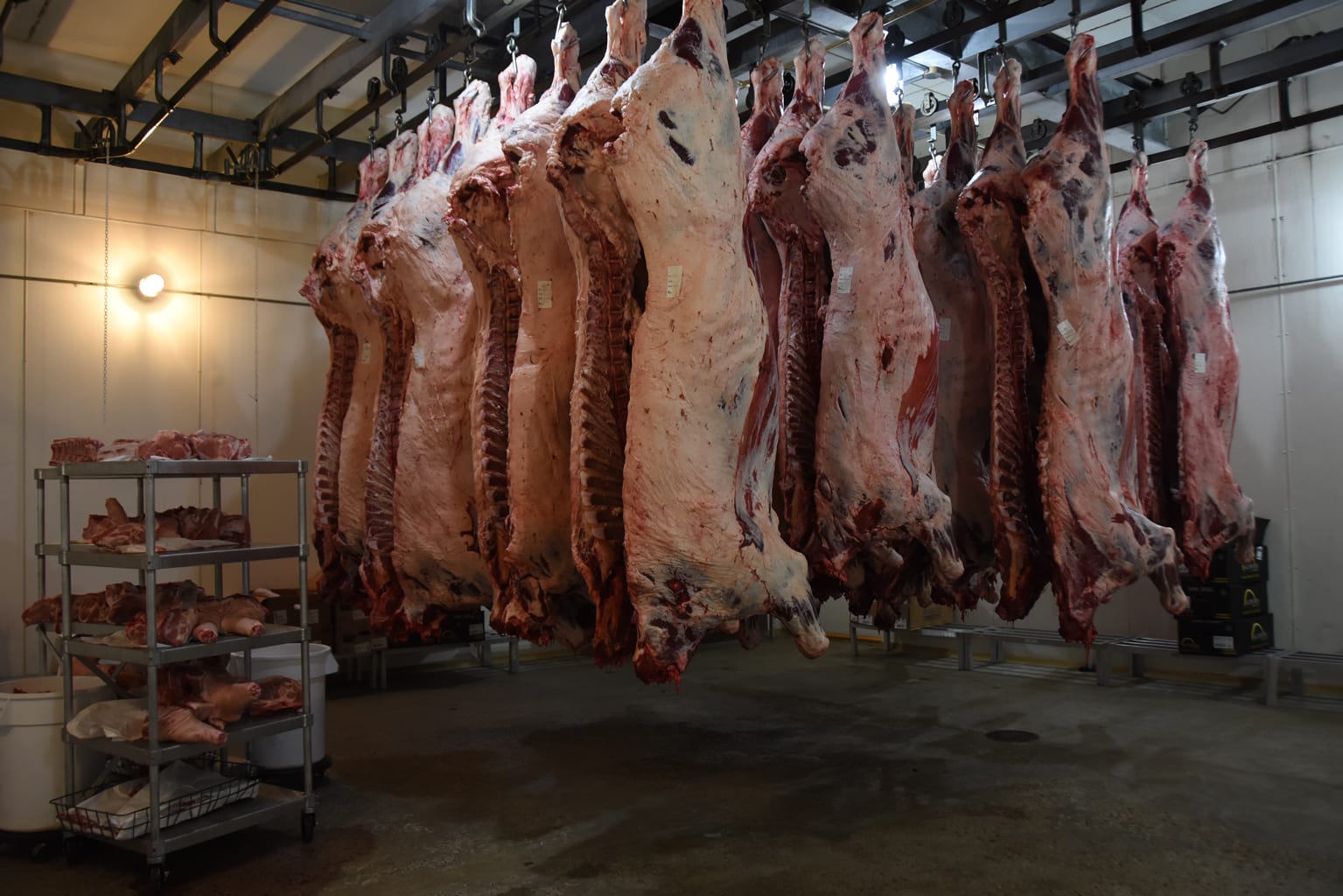Discover Fresh Cuts at Bagley Farms Meat Market Edwardsville IL for Your Following BBQ
Discover Fresh Cuts at Bagley Farms Meat Market Edwardsville IL for Your Following BBQ
Blog Article
Discover the Art of the Butcher's Cut in a Modern Meat Market
In the ever-evolving landscape of contemporary meat markets, the butcher's cut has transcended its conventional roots, combining olden workmanship with contemporary practices. Today's butchers are not just cpus of meat; they are experienced artisans that highlight sustainability and moral sourcing. Their expertise in choose and preparing cuts customized to details cooking requirements uses an unmatched dining experience. What genuinely sets the modern butcher apart is their ability to build a deeper connection between customers and the origins of their meat. How do these masters equilibrium tradition with development, and what ramifications does this have for the future of meat usage?
Advancement of Butchery Strategies
The development of butchery techniques shows an abundant tapestry of innovation and adaptation driven by improvements in modern technology, modifications in customer demand, and a much deeper understanding of meat scientific research. Historically, butchery was a craft passed down via generations, with methods honed over centuries to make best use of yield and taste. The industrial revolution ushered in automation, transforming typical techniques and making it possible for large-scale processing.
The mid-20th century saw butchery techniques better refined by clinical understandings into muscle biology and meat aging, enhancing both inflammation and taste. Advancements like vacuum cleaner product packaging and refrigeration prolonged item shelf-life, enabling butchers to diversify offerings and boost quality control. This duration also noted the rise of specific tools, such as band saws and meat slicers, which increased accuracy and performance in meat processing.

The 21st century has actually introduced digital modern technology right into the butchery realm. Electronic systems currently aid in monitoring animal provenance and optimizing cuts to meet certain client choices. Furthermore, a revival in artisanal butchery has actually emerged, blending conventional abilities with contemporary expertise to deal with customers looking for honest and lasting meat alternatives. This evolution emphasizes a dynamic interaction in between practice and advancement, conference contemporary demands while protecting the craft's heritage.
Comprehending Meat Cuts
Recognizing the intricacies of meat cuts is important for both butchers and consumers seeking high quality and value. For butchers, precise cuts reflect ability and respect for the craft, guaranteeing marginal waste and optimal yield.

Understanding muscle composition is essential; muscular tissues made use of extra often by the animal often tend to be tougher and are best fit for sluggish cooking techniques, while less-used muscles, like those found in the loin, are more tender and perfect for grilling or roasting. Experience with my link these distinctions empowers customers to make enlightened choices, enhancing their cooking endeavors.
Picking Quality Meat
Picking the best meat entails more than simply choosing an aesthetically enticing piece from the display. The art of selecting quality meat needs a critical eye and understanding of particular characteristics that indicate freshness and quality.
Secondly, take into Website consideration the marbling, which refers to the white flecks of fat within the muscle mass. Proper marbling is a vital indication of inflammation and taste, as it melts throughout food preparation, boosting the meat's juiciness. Bear in mind, greater marbling often associates with superior high quality cuts, such as USDA Prime.
Structure is another important element; meat should really feel firm to the touch, not slimy or overly soft. Furthermore, be conscious of the scent. Fresh meat must have a clean, neutral smell, complimentary from any type of sour or repulsive smells.
Combining Cuts With Cooking Methods

On the other hand, tougher cuts like brisket and chuck roast are rich in collagen, which breaks down into jelly when prepared slowly. These cuts are perfect for braising or sluggish roasting, enabling the meat to soften gradually and create deep, complex tastes. In a similar way, cuts such as short ribs and pork shoulder get on well with slow-cooking methods, where extended cooking times change their robust structures into delicious dishes.
Lamb shanks and oxtail, which need prolonged cooking to tenderize, are perfect prospects for cooking or slow-moving simmering. These approaches coax out rich, hearty flavors while preserving wetness. By understanding the distinct attributes of each cut, cooks and home cooks alike can boost their cooking productions, making certain each recipe is both pleasing and memorable.
The Butcher's Function Today
Browsing the advancing landscape of the Find Out More modern-day meat market, the butcher's duty today prolongs past plain prep work of cuts. Contemporary butchers are cooking craftsmens, instructors, and supporters for sustainable methods.
Along with crafting exact cuts, butchers currently involve directly with customers, supplying cooking guidance and customizing choices to suit private requirements and preferences. Their know-how in meat aging, marbling, and flavor accounts encourages customers to make educated decisions, enhancing their cooking experiences. This individualized service exhibits the butcher's evolving duty as a relied on advisor in the kitchen.
Moreover, butchers are critical in reducing waste, utilizing whole animals to develop diverse items such as sausages and stocks. This thorough approach not just values the pet however likewise straightens with contemporary sustainability objectives. This way, the contemporary butcher embodies both tradition and technology, adapting to an ever-changing market while maintaining the artistry and integrity of their craft.
Verdict
The contemporary butcher's craft elaborately weaves conventional techniques with contemporary innovations, stressing lasting methods and moral sourcing. Mastery in recognizing diverse meat cuts and quality indications empowers butchers to offer educated suggestions, aligning particular cuts with optimal food preparation techniques. This experience not just raises culinary experiences yet additionally reinforces the connection between consumers and the beginnings of their food. By honoring historical techniques while welcoming contemporary needs, the butcher's role continues to be important in today's innovative meat market (bagley farms meat market edwardsville il).
Report this page